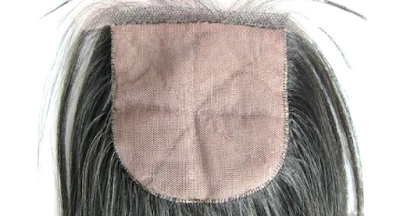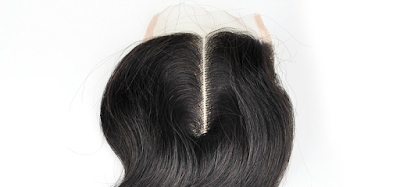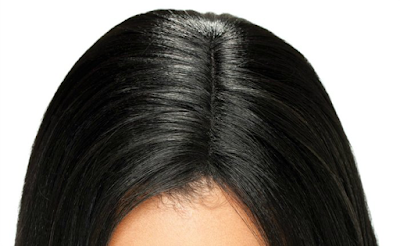Lace Closures are a fairly popular item for women who care about their hair. The flexibility and versatility of closures makes them applicable for just about all types of hair, whether natural, scanty, permed or the less thrilling receding hairline. Our natural hair doesn’t always blend well with foreign textures; for instance Brazilian or Indian, and as a result, some weaves tend to reveal breakage, bald spots and thinned edges: closures can be used effectively to prevent such occurrences. We answer the question,
If you know what to look for in Lace closures, you will have an easier time at the beauty salon. Here are some facts and tips about closures you should know about:
A lot of women tend to confuse frontals with lace closures. Closures are not frontals; however, frontals can be considered closures. Lace frontals are basically a hairpiece which mimics a person’s hairline, covering it up from ear to ear.Closures come in different forms and sizes so not every purchase would work for you. Look for the size that works perfectly for your scalp so that it fits well. Laced based closures are preferable because they lay flatter and are more comfortable.
Never use glue for your closure; it’s a common mistake among women and it could lead to hair loss. Sew the closure in to avoid spoiling it or losing hair.Closures cover the crown and though a frontal can be sewn or clipped in the back, the best method for putting it in place is by bonding. The bonding process involves liquid or tape adhesive whereby the adhesive is applied sparingly to the lace mesh and then carefully secured on the front part of the hairline.When wearing a weave, keep the area at the front hairline and crown well blended.Sewn-in or bonded weaves usually require lace closure to cover the top area where the track hair or weaving hair gets sewn/bonded down. This process often creates an area called the “horseshoe” where some hair gets left out.
Closures can be used to cover up that area and add some decorative style to enhance the weave.Always make sure you tint the materials used on your closure so that it matches your scalp. When you properly tint the closure it makes it easier to part, pull back or twist your hair in any style you want without drawing attention to the closure.You may use liquid, tape adhesives or weaving thread to apply closures: that will create a natural-looking head of weave. Just about everyone will be convinced it’s your natural hair.In order to get the best results, always get your closure fitted by a professional.
Apart from lace closures, several other types of closures exist. They include the following:
Silk Base Closures
Monofilament closure:
It’s essentially a mesh which happens to be the most durable type of closure and is applied in a single-strand method, hence the name mono-filament. It is perfect for stiffer hairstyles with full bangs because it maintains the original shape without much effort. The mesh creates a natural-looking transparent base which happens to be transparent and makes the scalp look better.
Skin-polyurethane closure: comes in a thin, flexible silicone base which tends to create the illusion of a natural scalp. It is not durable though, and it doesn’t let air in so it would not be ideal in hotter climates.
Combination/Hybrid closure:
Uses the longevity of monofilament and combines it with lace so as to create a natural-looking hairline. Hybrid closures come in high density especially in the portion with monofilament wigs and the lace when combined with flesh-tone silk creates a more natural look.
Invisible Part Closure:
This type of closure involves wefted hair sewn into a mesh base. It usually comes in an oblong shape and can be fitted in at an angle, where the depth of part can be manipulated without including the hairline.
Further Reading: Hair Toppers
If you know what to look for in Lace closures, you will have an easier time at the beauty salon. Here are some facts and tips about closures you should know about:
| Natural Straight Brazilian Remy Human Hair Lace Closure |
Never use glue for your closure; it’s a common mistake among women and it could lead to hair loss. Sew the closure in to avoid spoiling it or losing hair.Closures cover the crown and though a frontal can be sewn or clipped in the back, the best method for putting it in place is by bonding. The bonding process involves liquid or tape adhesive whereby the adhesive is applied sparingly to the lace mesh and then carefully secured on the front part of the hairline.When wearing a weave, keep the area at the front hairline and crown well blended.Sewn-in or bonded weaves usually require lace closure to cover the top area where the track hair or weaving hair gets sewn/bonded down. This process often creates an area called the “horseshoe” where some hair gets left out.
Closures can be used to cover up that area and add some decorative style to enhance the weave.Always make sure you tint the materials used on your closure so that it matches your scalp. When you properly tint the closure it makes it easier to part, pull back or twist your hair in any style you want without drawing attention to the closure.You may use liquid, tape adhesives or weaving thread to apply closures: that will create a natural-looking head of weave. Just about everyone will be convinced it’s your natural hair.In order to get the best results, always get your closure fitted by a professional.
Apart from lace closures, several other types of closures exist. They include the following:
Silk Base Closures
Monofilament closure:
It’s essentially a mesh which happens to be the most durable type of closure and is applied in a single-strand method, hence the name mono-filament. It is perfect for stiffer hairstyles with full bangs because it maintains the original shape without much effort. The mesh creates a natural-looking transparent base which happens to be transparent and makes the scalp look better.
Skin-polyurethane closure: comes in a thin, flexible silicone base which tends to create the illusion of a natural scalp. It is not durable though, and it doesn’t let air in so it would not be ideal in hotter climates.
Combination/Hybrid closure:
Uses the longevity of monofilament and combines it with lace so as to create a natural-looking hairline. Hybrid closures come in high density especially in the portion with monofilament wigs and the lace when combined with flesh-tone silk creates a more natural look.
Invisible Part Closure:
This type of closure involves wefted hair sewn into a mesh base. It usually comes in an oblong shape and can be fitted in at an angle, where the depth of part can be manipulated without including the hairline.
Further Reading: Hair Toppers



Comments
Post a Comment